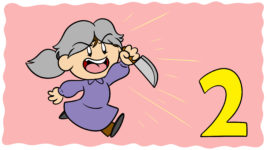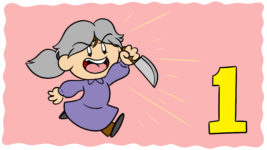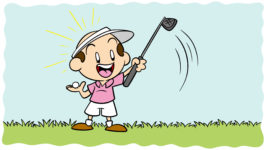Horses, mounts and other kinds of steed are the forgotten heroes of an adventurer’s story, but even when charging through crowds of orcs and goblins, they’re often the most unrealistic creatures in it, too.
Thanks to Hollywood, we’re accustomed to seeing cowboys riding from sunrise to sunset without pause, or wild steeds successfully wrangled and trained to complete obedience in days. Sometimes, your reader will suspend their disbelief and take this in stride, but it’s not something you should depend on.
We’ve written before on how understanding a system and depicting some of its flaws can enhance the realism of your story as a whole. In this guide, I’ll provide an equine crash course to get you started, and then show how these kinds of nitty-gritty details can be transferred onto a fantastical mount of your own creation.
A brief guide to horses
The key thing to keep in mind is that horses and mounts aren’t machines – they get tired, hungry, and they have feelings and personalities much like humans. That’s not to say you should think of a horse as being the same as a human, but don’t forget the ‘living’ part of ‘living creature’.
Living mounts aren’t machines – they get tired, hungry, and even annoyed. Click To TweetWhile you might not need to know absolutely everything there is to know about them, you never know when having some stats and facts in the back of your mind might come in handy. Knowing how much ground a charging stallion can cover in the space of thirty seconds, or what a newly-broken colt’s response would be when suddenly confronted by an axe-wielding cave troll, could inspire new events as well as enchancing realism.
Breed and anatomy
Do you know your Andalusian from your Westphalian? Horses have very distinctive markings and colorings, and these are what define their breed. There are far too many for me to name and describe here, but you can click here for the full (and exhaustive) list.
Horses are also split into three categories according on their temperament. ‘Hot bloods’ are known for speed and endurance, making them ideal for racing; ‘cold bloods’ tend to be draft horses and ponies, and are better suited to slower, heavier work like farming; and ‘warm bloods’ are – as you’ve probably guessed from the name – crossbred from hot and cold bloods to serve more specific human purposes.
As far as their anatomy goes, most of us know that horses spend most of their waking and sleeping hours standing up, and injury to their long, spindly legs can detrimentally impact their quality of life. But, there are lots of interesting physical things most of us don’t know about them. Their long ears, for instance, can rotate nearly 180 degrees. To get to know the difference between a ‘flank’ and a ‘crest’, take a look at this handy anatomy chart.
Gender and lifespan
Horses are defined by age, gender, and – in the case of males – their fertility status. These are:
- Mare (female)
- Stallion (male)
- Gelding (neutered male)
- Colt (baby male)
- Filly (baby female)
Pregnancies last 11–12 months. A domesticated foal (young horse) will usually be trained with a saddle or harness between 2 and 4 years old. They reach adulthood at 5 years old, and their average lifespan is between 25–30 years.
Care and behaviour
Again, there’s a lot to cover here, but there are a few general facts most likely to benefit authors.
- Horses are herbivores. Their diet consists mainly of grass, hay and oats, of which they need 15–24 lbs per day, as well as 10–12 gallons of water per day. As foraging creatures, though, they’re not especially fussy, but owners should be aware that they lack the ability to vomit.
- They can survive 3–4 days without water.
- Domestic horses only need 2–3 hours of sleep per day, which they do intermittently for a few minutes at a time.
- As prey animals, horses are extremely sensitives to their surroundings. Suitably, all their senses are well developed – especially vision, boasting the largest eyes of any land mammal.
- Their prey status also makes them herd animals. If they are no other horses around to befriend, they’ll simply latch onto the nearest horse-looking animal, like a donkey, sheep, cow, or even human. They’re usually quiet, preferring to communicate through body language, but – as I’m sure you’ve heard, if you’ve ever been near them – they also audibly communicate through whinnies and neighs when they need to. Much like verbal communication, different horse sounds mean different things.
- One myth perpetuated by fiction is that horses are loyal to their owners like dogs, and whilst there are rare cases of a horse protecting it’s owner, a horse is actually far more likely to blindly run off and save it’s own hide. This is commonly known as a horse being ‘spooked’.
- Horses need shoes. In medieval times, these were usually made from iron.
Training
This is called ‘breaking a horse in’, but it’s not as painful as it sounds. How long does it take to fully train a horse? While I’d love to give you an exact number of hours or days, the truth, according to this experienced trainer, isn’t so easily quantifiable.
Horses learn by repetition. It takes at least 150 repetitions of a task for a horse to really learn that task. That means, after you have asked a horse to walk by squeezing your legs, and the horse has walked forward for about 150 times, it will probably be trained to go forward at the walk. […] The truth is it takes much longer to finish a horse than what most people realize.
– Christine Amber, Equestrian Training
Movement and speed
Horses move with four natural gaits.
- Walking (averaging 6.4 kilometers per hour)
- Trotting (averaging 13–19 kilometers per hour)
- Cantering (averaging 19–24 kilometers per hour)
- Galloping (averaging 40–48 kilometers per hour)
Despite this, it’s almost impossible to say how far a generic horse could travel in one day. This can depend on breed, training, age, terrain, load, and a host of other variables. Like any living creature, horses are also capable of surpassing their healthy limits, so even a ‘possible’ distance can be an unrealistic benchmark for consistent performance. With this in mind, a range of 35–100 miles in a twelve-hour period is a sensible benchmark, with ‘warm blood’ horses near the lower end of the scale and ‘hot blood’ horses near the higher. This would include a few stops along the way to rest. For more information, try this well-thought-out response.
Sending your hero off on their quest? Factor terrain into how far they ride. Click To TweetSaddling and riding
Though some brave souls choose to ride bareback, most ride with a saddle. The humble saddle hasn’t actually changed much in design since medieval times, meaning that what you’d be sitting on for a riding lesson today would be a comparable point of reference for medieval fantasy. For a comprehensive visual guide to the saddle, from ‘pommel’ to ‘stirrup’, click here.
One thing that has changed since medieval times is that women were once expected to ride sidesaddle as passengers, mainly to preserve their ‘modesty’ amidst their unnecessary amount of skirt. For a practical guide on how to mount, ride and dismount a horse, click here.
Horses have been used as tools in combat for hundreds of years. In battle, this is called ‘cavalry tactics’, and includes weapons like bow and arrows, crossbows, swords, lances and – depending on your time period – guns. Click here for an in-depth introduction to mounted combat.
Applying equine knowledge to fictional mounts
Nothing adds otherwordly weight to a fantasy world like otherwordly creatures. Harry Potter had Buckbeak the Hippogriff, Atreyu had Falkor the Luckdragon and He-Man had Battle Cat the… well, the name speaks for itself.
Because it’s a made-up creature, there’s no reason why you can’t fabricate certain personality quirks or temperaments for your fictional mount, especially if you’re recycling an old classic like a dragon, which you’ll probably want to put your own personal spin on. Maybe it can exhale noxious gas, maybe it loves having its belly scratched, maybe it can fly, but only if its owner rubs its left ear and whispers a really heartfelt compliment.
Consider how far a horse can travel in a day. A good average for more fantastical creatures.Click To TweetUsing what’s been covered in this guide to horses as a blueprint, you now know the basic informational gaps that have to be filled in for your creature to plausibly exist in your world. But, just to make things easy, here’s a list of questions to ask when creating your fantasy mount.
- What are its breeds and distinctive markings?
- What are its gendered differences?
- What are its ageing differences?
- How long is its lifespan?
- What are its dietry needs?
- What are are its survival abilities/instincts?
- Is it prey or predator?
- What is its natural habitat?
- What are its methods of communication?
- How does it move?
- How fast is it?
- How easy is it to train?
- How do you ride it?
Give your steed some personality
From Black Beauty to Pegasus to Shadowfax, horses are capable of being figures of both great strength and beauty; stockiness and grace; comedic stubborness and loyal bravery, and – depending on their mood – can evoke fear or compassion in we bipedal animals. As well as bearing in mind their physical appearance, needs and behaviors, you should also be mindful that, like most animals, horses have their own personalities. Giving your chosen mount one – be it a noble horse, slobbering warg, or giant sandworm – will therefore not only help your reader connect with it as they would a human character, but it’s realistic, too.
Let me know the quirks of your own fantasy mounts below and, for more advice on writing a believable, engaging mount, check out Are You Writing Believable Non-Human Characters? and The 3 Golden Rules Of Writing About Your Pet. I also recommend Passing Time Is The Secret To Improving Your Story and One Simple Rule To Avoid Technical Details Ruining Your Story as great follow-ups to the horse facts above, and What Authors Need To Know About Ships And Spaceships and How To Write An Epic Battle Scene for complementary insights.






13 thoughts on “Everything A Fantasy Author Needs To Know About Horses And Mounts”
Hi!
Thank you very much for the guide (I think I need to learn more about horses, haha). Do you have any recommendations for authors who write horses realistically? I have read Christian Cameron, who seems to have some knowledge, but it’s hard to tell.
~Simen ^^
Hi Simen,
You’re welcome! Glad you learned a thing or two from it. I know what you mean – as non-horse experts it can be hard to tell when one has been written well or not.
“Black Beauty” has always been a favorite of mine personally (maybe an obvious choice…) The Horse Channel (who are such experts) put together a good list of recommendations you might find useful: http://www.horsechannel.com/horse-fun/30-best-horse-books.aspx
Thanks,
Hannah
One factor, fatigue, could be added. If you push a saddle horse to 30-50 miles in a day, it can’t be ridden again for several days to weeks. If the rider expects to ride the same horse the next day, the limit depending on load and terrain, is less than 25 miles/day, Even then, the horse needs a day or two of rest every week to stay healthy.
Hi Frank,
A helpful addition – thanks! It can be hard to cover absolutely everything on such broad subjects, sometimes.
Thanks,
Hannah
And always have someone who actually knows horses and rides to vet your book before you publish it. I can always spot someone who isn’t a horse person, no matter how hard that person researches. Tiny things are often massive mistakes.
Hi Marilynn,
Thanks for the tip – great advice for other writers. I sourced a lot of this information from trainers – particularly the bits about behavior and training as first-hand knowledge is obviously always the most trustworthy, as you said.
Thanks,
Hannah
I don’t call myself an expert by any means, but I’ve owned several horses in the past and worked at a few stables, so if I can point out just a couple of things…
Coloring and markings only apply to a few breeds; for example, most breeds come in chestnut or bay (the most common colors among horses). Conformation also applies–an Arabian can easily be differentiated from other breeds just by its dish-shaped forehead. An Akhal-Teke stands out from just about any breed because of the metallic sheen to its coat and its extremely slender build.
Your comments about average speed of horses at different gaits are true but only within certain limits. A horse cannot gallop flat-out all day long. (Stamina is a huge factor in horse breeding–a Quarter Horse will outrun a Thoroughbred for a short distance; a Thoroughbred will outrun an Arabian for a medium distance; but an Arabian will run most other breeds into the ground over a prolonged distance.)
Remember the Pony Express, the equine forerunner to Fed-Ex 🙂 . In order to speed Pony Express mail across the country, they had to set up stations about ten to fifteen miles apart. The carriers would mount their horses (small and compact horses with lots of stamina were used; the riders had to be small too) and they would gallop like mad toward the next station, arriving after the 10 or 15 miles with the horse badly winded and trembling all over; the rider would jump onto a fresh horse and keep going. The real “cowboys” of old covered more ground at a steady lope (canter) than a gallop, which was saved for emergencies.
Thank you, Hannah. My heroine horse, Wasmi, thanks you too.
Hi Mel,
Thanks for adding your own expertise to the mix.
– Rob
Thanks for these useful tips. I think my character can only afford a donkey but this will come in handy.
Hi Yvonne,
Haha, thanks for the kind words.
– Rob
Okay, but what if the horses aren’t really a focal point of your story? Like, horses drawing a cart or carriage. They really aren’t anything beyond a conveyance.
How much do you have to worry about nitpicky horse people then?
Thanks for the tips! Can you give an example of authors whose books can relate to our real life?